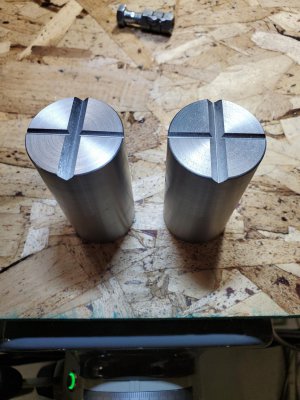- Joined
- Aug 3, 2017
- Messages
- 2,437
If you mount the material in a vice at 45 degrees, you have to 'center' the corner by matching 'Z and X axis motion. TIlted head or chamfer only requires moving 1 axis.
was that in the stuff that I sent you? Be interesting to see how you get on with it. One thing that I've read is that the tip doesn't like cutting as it's rotating so slowly, so a good solution is to cut a relief slot the full depth of the V and then a little bit more before cutting the V. That way you're only cutting on the sides of the cutter.I just happen to have a 90° chamfer; I may try that since I don't have one of the cutters that Dave linked to.
In 15 years of owning a Bridgeport, I have never had to tilt the head. It’s always been way easier to tilt the part, or clamp it to a tilt table.
Knowing a little trig, at least the basics of sine, cosine and tangent functions seems fundamental to good machining.
And really, in an hour, I believe anyone could learn these functions.
Am I wrong?
was that in the stuff that I sent you? Be interesting to see how you get on with it. One thing that I've read is that the tip doesn't like cutting as it's rotating so slowly, so a good solution is to cut a relief slot the full depth of the V and then a little bit more before cutting the V. That way you're only cutting on the sides of the cutter.
I got the 1/4” version of this off eBay from China specifically for grooving the top of a pair of minimalist jacks - great minds?I was not going to complicate my life... I got this and it has seen a lot of use in the little time I have own it...
View attachment 415875

